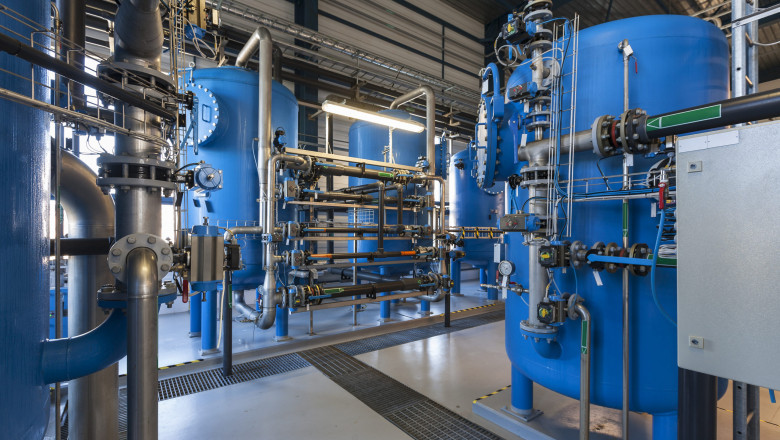views
Introduction
Water treatment is an essential industry that ensures the availability of clean and safe water for various applications, including municipal, industrial, and commercial uses. The use of polymers in water treatment has gained significant traction due to their effectiveness in coagulation, flocculation, and sludge dewatering processes. As environmental regulations tighten and the demand for clean water grows, the global water treatment polymers market is witnessing steady expansion. This article explores the market performance, key drivers, challenges, and future trends shaping the industry.
Market Overview
The global water treatment polymers market has been experiencing significant growth, driven by rising concerns over water scarcity and pollution. Polymers play a crucial role in wastewater treatment, industrial effluent management, and municipal water purification. The market is segmented based on polymer type, application, and geography.
Key Polymer Types
-
Coagulants – These polymers help in neutralizing charges and initiating the aggregation of suspended particles.
-
Flocculants – Essential for binding and settling particles, flocculants improve the efficiency of water treatment plants.
-
Scale Inhibitors – Used in industrial processes to prevent scaling and extend equipment life.
-
Dispersants – Help maintain particle dispersion, preventing sludge build-up and improving filtration efficiency.
Key Applications
-
Municipal Water Treatment – Cities and municipalities increasingly rely on polymers to purify drinking water and treat wastewater.
-
Industrial Water Treatment – Industries such as power generation, oil and gas, pharmaceuticals, and food processing utilize water treatment polymers to comply with environmental regulations.
-
Pulp and Paper Industry – The sector heavily depends on polymers for wastewater treatment and process water purification.
-
Mining and Metallurgy – Used in tailings management and wastewater treatment to ensure environmental compliance.
Market Drivers
1. Stringent Environmental Regulations
Governments worldwide are enforcing stricter water treatment and discharge standards. The increased focus on sustainable water management has fueled demand for advanced water treatment polymers that enhance purification efficiency and reduce chemical usage.
2. Growing Industrialization
Rapid industrialization in emerging economies has led to increased water consumption and wastewater generation. Industries require efficient treatment solutions, driving the adoption of polymers in water treatment applications.
3. Rising Water Scarcity
With growing global concerns over water scarcity, water reuse and recycling have become critical. Water treatment polymers play a crucial role in ensuring effective recycling processes, thereby driving market demand.
4. Technological Advancements
Advancements in polymer chemistry and water treatment technologies have led to the development of eco-friendly and highly efficient polymeric solutions. Biodegradable and bio-based polymers are gaining popularity, further propelling market growth.
Challenges and Restraints
1. High Costs of Specialty Polymers
Specialty polymers, particularly bio-based and high-performance variants, come with higher costs, which may limit their adoption, especially in cost-sensitive markets.
2. Environmental Concerns Over Synthetic Polymers
While synthetic polymers are effective, their environmental impact has raised concerns. The non-biodegradable nature of certain polymers contributes to microplastic pollution, prompting regulatory scrutiny and driving the need for sustainable alternatives.
3. Supply Chain Disruptions
Fluctuations in raw material prices and supply chain disruptions, especially due to global crises, impact the overall market dynamics. Ensuring a steady supply of raw materials is crucial for market stability.
Regional Insights
North America
The North American market is driven by stringent environmental policies, significant industrial activity, and high water reuse initiatives. The United States and Canada are major contributors to market growth.
Europe
Europe has been at the forefront of sustainable water treatment practices. The implementation of strict regulations, such as the EU Water Framework Directive, has propelled the adoption of water treatment polymers.
Asia-Pacific
The Asia-Pacific region is experiencing the fastest growth due to rapid urbanization, industrialization, and increasing awareness about clean water. Countries like China and India are witnessing high demand for water treatment solutions.
Latin America and Middle East & Africa
These regions are gradually expanding their water treatment infrastructure, with an emphasis on improving wastewater management. Government initiatives and investments in water sustainability are fueling market growth.
Future Trends
1. Development of Bio-Based Polymers
The shift towards sustainable solutions has accelerated research and development in bio-based polymers. These alternatives aim to reduce environmental impact while maintaining efficiency in water treatment processes.
2. Smart Water Treatment Technologies
Integration of artificial intelligence and data analytics in water treatment processes is enhancing polymer efficiency. Smart water treatment plants optimize polymer usage and improve overall performance.
3. Expansion of Decentralized Water Treatment Systems
Decentralized water treatment solutions are gaining traction, especially in rural and remote areas. These systems require efficient polymeric solutions to ensure cost-effective and reliable water purification.
4. Increased Investment in Water Infrastructure
Governments and private investors are allocating more resources to water treatment infrastructure. This trend is expected to create growth opportunities for polymer manufacturers and suppliers.
Conclusion
The water treatment polymers market is poised for significant growth, driven by rising environmental concerns, industrialization, and technological advancements. While challenges such as cost and environmental impact persist, the shift towards sustainable solutions presents new opportunities. As the demand for clean water continues to rise, innovation and regulatory support will play a crucial role in shaping the future of the industry. Stakeholders in the water treatment sector must focus on sustainable practices, research, and infrastructure development to ensure long-term market sustainability.






















Comments
0 comment